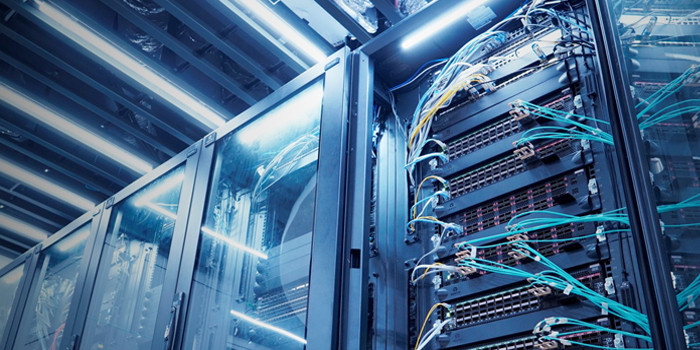Ethernet and Its Next Chapter: Navigating the Shift to Ultra Ethernet

Ethernet has been a networking staple for decades for devices to communicate directly. Beyond communication, it powers mission-critical networks in industry and banking. Thanks to Ultra Ethernet, Ethernet can manage high-throughput, low-latency needs. For instance, Ethernet's scaling from 10 Mbps to 800 Gbps shows its suitability for small local area networks (LANs) to large data centers. Its precise traffic management and Time-Sensitive Networking (TSN) are ideal for industrial automation and real-time applications.
Wide Adoption and Versatility of Ethernet
Ethernet is used in data centers, corporations, and wide-area networks (WANs) because of its stability and performance. For example, it dominates data centers with multi-terabit architectures and hyperscale operations. Ultra Ethernet is critical for AI training and HPC workloads because its high-bandwidth and low-latency features help manage the computational loads and data transfers from such applications. Furthermore, it also supports the latest technologies, including 5G backhaul, IoT, and edge computing. Energy-efficient Ethernet and virtualized network interface cards (vNICs) show the wide-ranging innovations within Ethernet technology. This also highlights its adaptability and embryonic applications.
The Evolution: Introduction to Ultra Ethernet (UE)
Ultra Ethernet (UE) is an advancement in Ethernet. Created in 1973, Ethernet has been updated to meet networking settings from LANs to global data centers. Traditional Ethernet struggles to handle large-scale, latency-sensitive jobs as AI, ML, and HPC workloads expand. Ultra Ethernet, led by the Linux Foundation-founded Ultra Ethernet Consortium (UEC), began in 2023. AMD, Intel, Microsoft, IBM, Huawei, and Tencent have supported UEC.
Since November 2023, the UEC has accepted 45 additional members, which demonstrates that the industry desires a comprehensive Ethernet-based communication stack design for high-performance networking. All these IT businesses' engagement underlines a demand the UEC is addressing in the sector, says UEC Steering Committee Chair J Metz.
UEC's membership has grown fivefold from 10 steering members to 55 in the previous few months. Since its formation last year, the consortium has assembled a strong skill pool. Thus, the project is building an open, interoperable communication stack for AI and HPC applications to advance Ethernet. Consequently, it is becoming a high-performance, scalable networking architecture that can tackle complex data by eight technical working groups.
Ultra Ethernet: A Glimpse into the Future
Key Features of Ultra Ethernet
Ultra Ethernet improves computing scenarios' performance over standard Ethernet. High-throughput 800G connections are now ubiquitous, while 1.6T Ethernet (802.3dj) and 3.2T Ethernet are planned. Such rapid connections let AI models synchronize terabytes of data across GPU clusters, which requires immense bandwidth. Ultra Ethernet lowers latency, a fundamental issue in Ethernet topologies. It cuts latency using packet spraying and on-demand retransmission. Henceforth, it renders millisecond-level synchronization activities, including training AI models with tens of trillions of parameters, economical.
Another priority is reliability. Global congestion avoidance utilizing telemetry optimizes data flow in networks with tens of thousands of nodes. Ultra Ethernet's capability to route traffic and sustain lossless communication even after small malfunctions makes it a self-healing, dependable network for mission-critical applications subject to downtime or data loss.
Future Workloads
Ultra Ethernet will underpin complicated, data-intensive AI and HPC applications in the future. Existing networking solutions might struggle to keep up with models with over a trillion parameters and datasets over 50 terabytes. Ultra Ethernet allows training next-generation AI models with up to 10 trillion parameters while connecting over 100,000 GPUs in a single network. Science, NLP, and autonomous systems demand massive computing capacity for real-time data analysis and decision-making, so such models are key.
Ultra Ethernet's throughput and ultra-low latency allow even the most data-hungry applications to manage petabytes in near real-time. Its Allreduce and Allgather collective communication abilities enable broadcast and synchronization across nodes. So, it decreases bottlenecks and training periods for large-scale neural networks. Ultra Ethernet will also do well in hyperscale data centers, which must handle billions of data streams from IoT devices, sensors, and edge computing nodes. It shows its position in next-gen network infrastructures.
The Essential Role of Ethernet Switches

Ethernet switches are necessary for high-performance networks, and Ultra Ethernet renders them even more important. It guarantees helpful packet forwarding, congestion control, and scaled network performance. Ethernet switches must provide ultra-low latency and high-speed data transfer across thousands of nodes in AI and HPC applications. With cut-through switching features that limit latency to 560ns, ultra Ethernet-compatible switches can meet such requirements. Even during sizable collective communication operations, including GPU cluster RDMA traffic, the 200+ MB on-chip packet cache keeps data flowing.
Additionally, Ultra Ethernet switches must be fast and programmable to cope with changing workloads. For example, line-speed programmability architectures may enable switches to alter forwarding pathways depending on network circumstances. The switches manage unpredictable workloads with integrated traffic analysis and monitoring so AI data centers can grow without sacrificing performance. Along these lines, Ethernet switches under Ultra Ethernet's umbrella will remake AI and HPC data delivery for fluid, high-performance operations for years to come.
UfiSpace Joins the Ultra Ethernet Consortium (UEC)
We joined the Ultra Ethernet Consortium to develop networking while combining disaggregated routing technologies with Ethernet's growing capabilities. With this partnership, UfiSpace, a leader in 5G and open networking solutions, may influence the future of Ethernet technologies to satisfy the high bandwidth needs of AI workloads. Our carrier-grade, scalable, and high-density platform experience allows us to help define next-gen Ultra Ethernet standards while supporting global network development.
